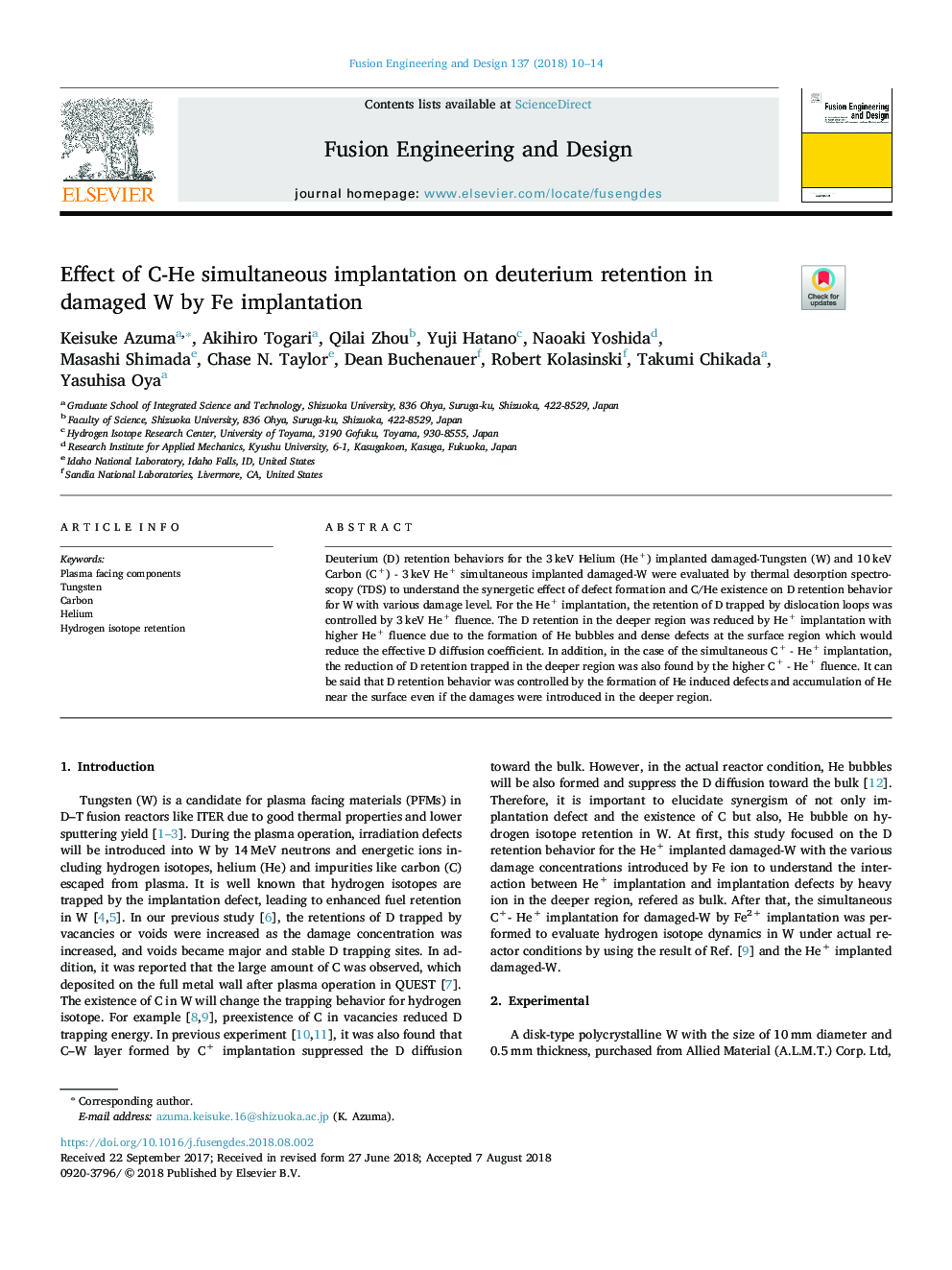| Article ID | Journal | Published Year | Pages | File Type |
|---|---|---|---|---|
| 9951883 | Fusion Engineering and Design | 2018 | 5 Pages |
Abstract
Deuterium (D) retention behaviors for the 3âkeV Helium (He+) implanted damaged-Tungsten (W) and 10âkeV Carbon (C+) - 3âkeV He+ simultaneous implanted damaged-W were evaluated by thermal desorption spectroscopy (TDS) to understand the synergetic effect of defect formation and C/He existence on D retention behavior for W with various damage level. For the He+ implantation, the retention of D trapped by dislocation loops was controlled by 3âkeV He+ fluence. The D retention in the deeper region was reduced by He+ implantation with higher He+ fluence due to the formation of He bubbles and dense defects at the surface region which would reduce the effective D diffusion coefficient. In addition, in the case of the simultaneous C+ - He+ implantation, the reduction of D retention trapped in the deeper region was also found by the higher C+ - He+ fluence. It can be said that D retention behavior was controlled by the formation of He induced defects and accumulation of He near the surface even if the damages were introduced in the deeper region.
Related Topics
Physical Sciences and Engineering
Energy
Energy Engineering and Power Technology
Authors
Keisuke Azuma, Akihiro Togari, Qilai Zhou, Yuji Hatano, Naoaki Yoshida, Masashi Shimada, Chase N. Taylor, Dean Buchenauer, Robert Kolasinski, Takumi Chikada, Yasuhisa Oya,
